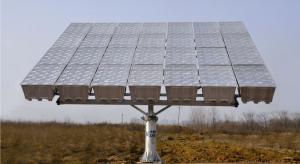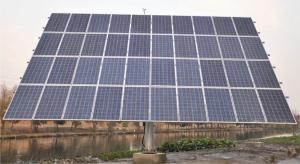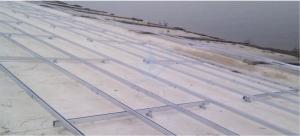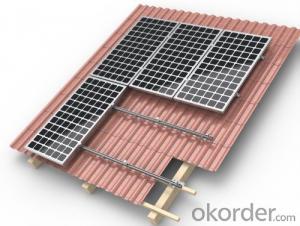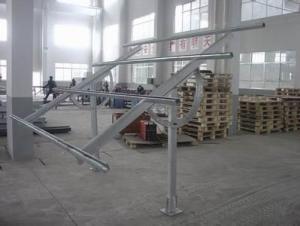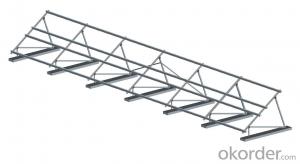Ground Mount Solar Racking System TT-EC-F35 Solar Panel Mounting System
- Loading Port:
- China Main Port
- Payment Terms:
- TT OR LC
- Min Order Qty:
- -
- Supply Capability:
- -
OKorder Service Pledge
OKorder Financial Service
You Might Also Like
PV Mounting brackets are special solar photovoltaic systemfor placing, installing, fixing the solar panel design. Generally materials arealuminum, steel structure, stainless steel. PV mounting products at groundmounting system, flat roof mounting system, adjustable angle roof rack system,inclined roof rack system, column bracket system.
The Ground Mounting System including concret basement sysytemand steel pipe sysytem, Titanergy provides total solution for flat or pitchedroof with patent products.On the basis of the given project data, specificnational standards and guidelines, Titanergy will calculate the completestructural analysis and create a complete project plan to make sure reliablestructural safety.We provide high quality HDG steel and aluminum products forthe ground mounting sysytem,witch can make sure the security and durability ofthe project.
Features and Advantages
n The rail bracket is easy to install, just use simple tools(eg, Allen wrench) can be easily installed. Rail connecting member can freelyadjust the length, the stent may be pre-installed on the roof, and thenappropriately adjusted according to the size of the solar panel.
n The combination of strong, aluminum rails and card blocks fora variety of venues and a variety of materials roofs (such as metal, ceramicand other kinds of tile surface)
n Component compatibility, and rail can meet PV modules fromdifferent manufacturers.
n accuracy, the length of the rail to the nearest millimeter,the construction process, not because of the length is too long or too shortfor the second cut.
n flexible assembly, rail hooks can adjust the spacing modulearray and tile has been installed successfully address the uneven roofconstruction led to difficult problems.
n design standards, product design and development process instrict accordance with GB, the German standards and other internationalstandards to ensure products reach the world advanced level.
n Quality assurance, the stent main material is high-qualityaluminum and stainless steel, effectively prevent corrosion of oxidation.Products can be recycled, reducing environmental pollution.
n Carried out strictly according to the current specificnational standards
n Perfectly optimized components and complete structuralanalysis for the sysytem
n High corrosion resisitance ensure the stability and highdurability
n Total test and certification make sure the high quality ofthe products
n Maximum pre-assembled in factory,quick mounting onsite,timesaving
10-year durability warranty
Technical Data
n Design Period:25 years
n Installation Site: Open area
n Array Angle:10°~60°
n ModuleType:Framed or unframed
n Material:Q235B,Al 6063-T5,Al 6005-T5,StainlessSteel A2-70
n Coating:HDG/Anodised



- Q: What are the different types of solar mounting systems?
- There are three main types of solar mounting systems: roof-mounted, ground-mounted, and pole-mounted. Roof-mounted systems are installed on the roofs of buildings and are the most common type. Ground-mounted systems are installed on the ground and are suitable for large open spaces. Pole-mounted systems consist of solar panels mounted on a single pole and are often used for street lighting or remote power applications.
- Q: What are the advantages of using a ground-mounted solar system?
- There are several advantages of using a ground-mounted solar system. Firstly, ground-mounted systems can be installed in areas with limited roof space or where the roof is not suitable for solar panels. This provides more flexibility in choosing the location for solar installation. Secondly, ground-mounted systems can be easily adjusted to optimize the tilt and orientation of the panels, ensuring maximum sunlight exposure throughout the day. This allows for better energy production and higher efficiency compared to roof-mounted systems, which may have fixed orientations. Additionally, ground-mounted systems are generally easier to maintain and clean since they are easily accessible. This can result in lower maintenance costs and better long-term performance of the solar panels. Lastly, ground-mounted systems are scalable, meaning that they can be expanded easily by adding more panels to meet increasing energy demands. This makes them a suitable choice for both residential and commercial applications.
- Q: Can a solar mounting system be used with solar-powered irrigation systems?
- Yes, a solar mounting system can be used with solar-powered irrigation systems. The solar mounting system helps to securely position and support the solar panels, which generate electricity to power the irrigation system. By utilizing the sun's energy, the solar mounting system helps enhance the efficiency and effectiveness of solar-powered irrigation systems.
- Q: What is the expected payback period for a solar mounting system installation?
- The expected payback period for a solar mounting system installation can vary depending on factors such as the initial cost of the system, the amount of energy it generates, and the local electricity rates. However, on average, solar mounting systems usually have a payback period of around 5 to 10 years.
- Q: Can solar mounting systems be used for both residential and commercial installations?
- Yes, solar mounting systems can be used for both residential and commercial installations. These systems are versatile and can be customized to accommodate various types of roofs and ground surfaces, making them suitable for both residential homes and larger commercial buildings.
- Q: Are there any specific requirements for wind deflectors when using a solar mounting system in windy areas?
- Yes, when using a solar mounting system in windy areas, it is recommended to have wind deflectors that are specifically designed to handle high wind speeds. These wind deflectors help to minimize wind load on the solar panels and ensure the stability and integrity of the system.
- Q: Can a solar mounting system be installed on a boat or yacht?
- Yes, a solar mounting system can be installed on a boat or yacht.
- Q: How does a solar mounting system affect the roof's integrity?
- A solar mounting system, if properly installed, should not significantly affect the roof's integrity. It is designed to distribute the weight of the solar panels evenly across the roof's surface, minimizing any potential damage or stress. Additionally, modern mounting systems utilize non-penetrating methods or secure attachments to prevent leaks or structural issues. However, it is crucial to consult a professional installer to ensure the system is correctly installed and does not compromise the roof's integrity.
- Q: How do you secure a solar mounting system to the ground?
- A common method to secure a solar mounting system to the ground is by using concrete footings or ground screws. Concrete footings involve digging holes and pouring concrete to create a stable foundation. Ground screws, on the other hand, are large metal screws that are twisted into the ground to provide a secure attachment point. Both methods ensure the solar mounting system remains firmly anchored to the ground, even in adverse weather conditions.
- Q: Can solar mounting systems be installed on buildings with limited roof orientation options?
- Yes, solar mounting systems can be installed on buildings with limited roof orientation options. While optimal roof orientation (south-facing in the northern hemisphere and north-facing in the southern hemisphere) is preferred for maximum solar energy production, solar mounting systems can still be adapted to work on roofs with less ideal orientations. This can be achieved by using adjustable or tilt-angle mounting systems, tracking systems, or by installing solar panels on other parts of the building such as walls or awnings.
Send your message to us
Ground Mount Solar Racking System TT-EC-F35 Solar Panel Mounting System
- Loading Port:
- China Main Port
- Payment Terms:
- TT OR LC
- Min Order Qty:
- -
- Supply Capability:
- -
OKorder Service Pledge
OKorder Financial Service
Similar products
Hot products
Hot Searches
Related keywords






